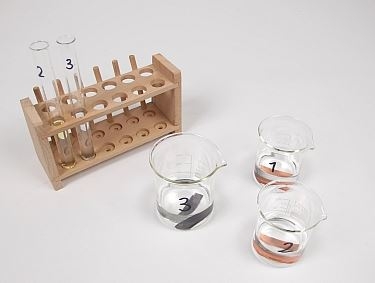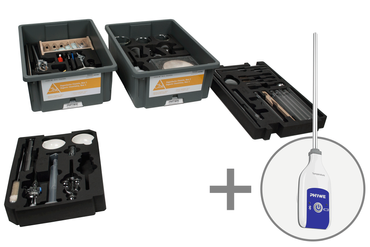Short-chain carboxylic acids react with Fe3+ ions to form red-coloured complexes of the type [Fe3(OH-)2(HCOO-)6]1+[HCOO]1-, which decompose to brown iron(II) oxyhydrate on heating. Verdigris is basic copper acetate Cu(CH3COO)2•Cu(OH)2. Naturally occurring verdigris forms in the presence of CO2, CO and moisture in the air with basic copper carbonate as intermediate. The verdigris formation is not very specific, as the other short-chain carboxylic acids also form similarly structured copper compounds.
It could be useful to show in a parallel demonstration experiment that pure acetic acid does not give a red-colouration. Working in groups is recommended for this experiment, so that the time until the formation of verdigris can be utilized. One group can carry out the iron chloride test while a second group starts the experiment on verdigris formation.
Learning objectives
- Formic acid and acetic acid exhibit some reactions typical for carboxylic acids, and can so be distinguished from other acids.
- Typical reactions are the red colouration on the addition of iron(III) chloride and the formation of verdigris.
Benefits
- Easy teaching and efficient learning by using interactive experimentation PHYWE-Software
- Experiment is part of a complete solution set with experiments for the topic Organic Chemistry matched with international curriculum: all topics are covered


